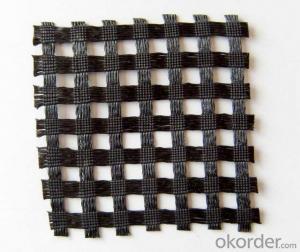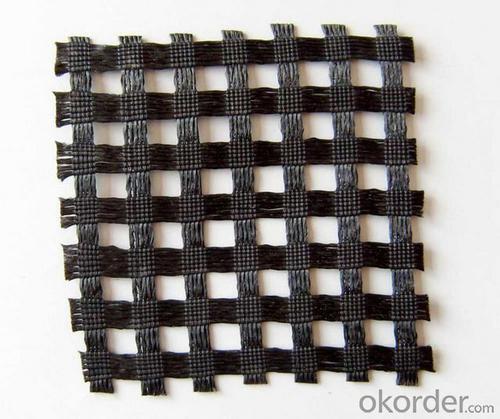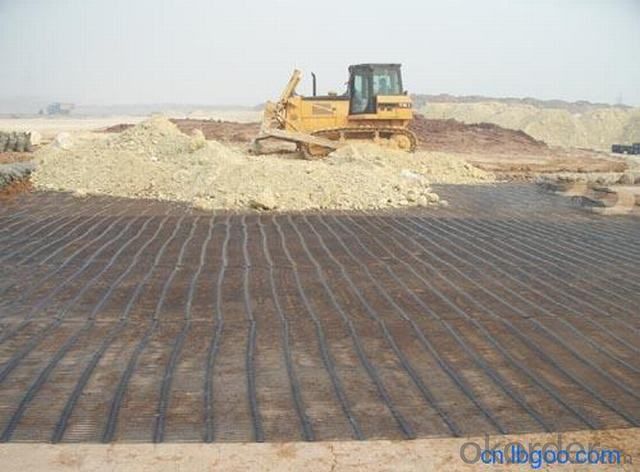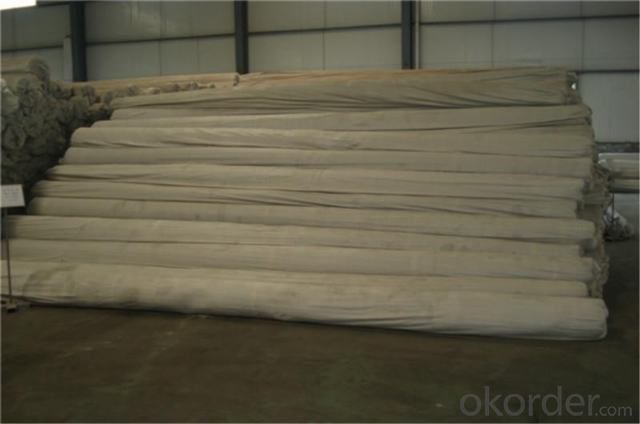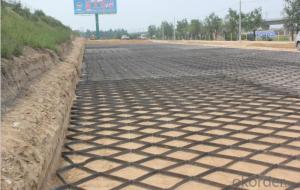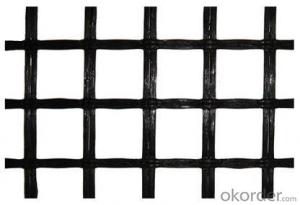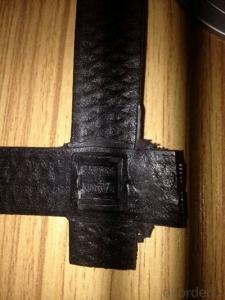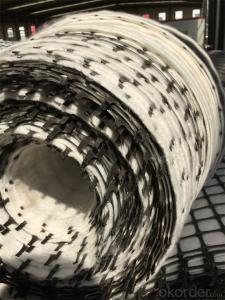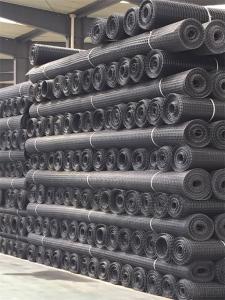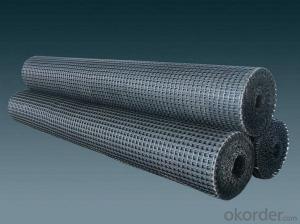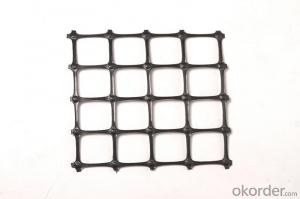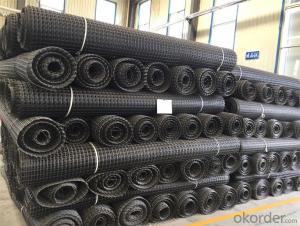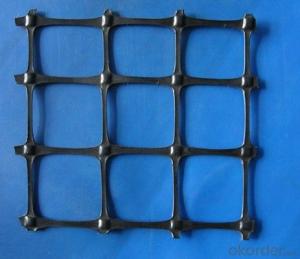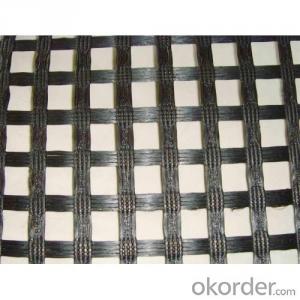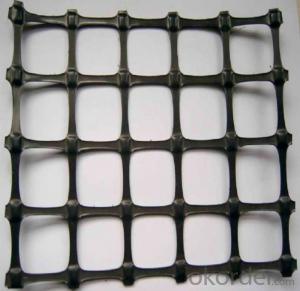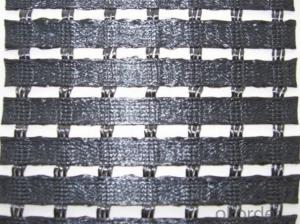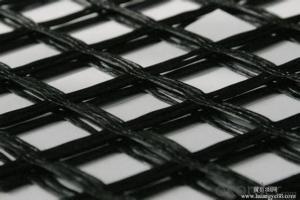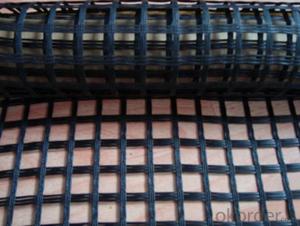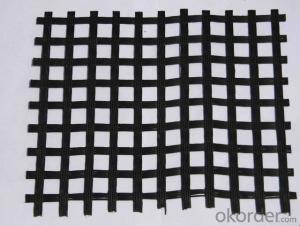HPDE Geocells Fiberglass Geogrid with CE Certification
- Loading Port:
- Qingdao
- Payment Terms:
- TT or L/C
- Min Order Qty:
- 20000 m²
- Supply Capability:
- 10000000 m²/month
OKorder Service Pledge
OKorder Financial Service
You Might Also Like
Fibergalss Geogrid Profile
Fiberglass geogrid is a new excellent maeterial used for reinforcing road surface and base, it made by fiberglass filament, and covered by special solution. High longitudinal and horizontal strength, low elongation rate, anti-alkali and aging resistance, widely used in asphalt road surface, concrete road surface and reinforceing road base.
Main Features of Fibergalss Geogrid
1.Tensile Strength (KN/m): 30X30KN/M,50x50KN/M,60X60KN/M,70X70KN/M,80X80KN/M
2. Elongation: 3%
3. Mesh Size: 25.4 x 25.4mm or 12.7x 12.7mm
4. Width: 1-6m
5.Temperature Resistance (Centigrade) : -100~290
6.Surface Processing: Modified asphalt or Polymer and self adhesive
7.Packing: with PE bag packing
Also detailed specification may be manufacturered according to your need.
if you are interest in our project, pleas contact me for further information.
Specifications of fiberglass
Specification | 1×1 | 1×1 | 1×1 | 1×1 | 1×1 | 2×2 | 2×2 | |
Strength | Long . Horiz | ≥30 | ≥50 | ≥60 | ≥80 | ≥100 | ≥60 | ≥80 |
≥30 | ≥50 | ≥60 | ≥80 | ≥100 | ≥60 | ≥80 | ||
Percentage of Elongation | 4% | 4% | 4% | 4% | 4% | 4% | 4% | |
Size of Hole mm | 25.4×25.4 | 25.4×25.4 | 25.4×25.4 | 25.4×25.4 | 25.4×25.4 | 12.7×12.7 | 12.7×12.7 | |
Flexibility | 76 | 76 | 76 | 76 | 76 | 76 | 76 | |
Width M | 1--6 | 1--6 | 1--6 | 1--6 | 1--6 | 1--6 | 1--6 | |
Temperature | -100200 | -100200 | -100200 | -100200 | -100200 | -100200 | -100200 | |
FAQ
1.Resistance to Fatigue Cracking of Fiberglass Geogrid
The fiberglass geogrid in asphalt surface can disperse the compressive strength and tensile strength produced when wheels rolled over the pavement. Buffer zone will be formed between two strength areas, and the strength is gradually changed rather than suddenly changed, thus the damage of strength to the asphalt surface is reduced. In the mean time, low elongation rate of the fiberglass geogrid reduced the deflection of the pavement, and protect the pavement from excessive deformations.
2.High Temperature Rutting Resistant of Fiberglass Geogrid
When using fiberglass geogrid in asphalt surface, it acts as skeleton in the surface. Aggregate in the asphalt concrete exists throughout the grid. A composite constraint force in the asphalt surface. The mutual containment of each other in asphalt surface prevents the bed-load of the asphalt surface and resists the effects of rutting.
3.Low temperature shrinkage cracking resistant of Fiberglass Geogrid
In low temperature, asphalt concrete will shrink in cold and tensile strength will be produced. If the tensile strength exceeds the tensile strength of asphalt concrete, it will crack. The application of fiberglass geogrid in asphalt surface, improves the horizontal tensile strength of the surface, and greatly improves the tensile strength of asphalt concrete, thus great tensile strength can be resisted without any damage. In addition, even if some area cracks, the strength in the crack will disappear in their transmission in fiberglass geogrid. Cracks will not develop into fissures.
4.Delay and reduce reflective fissures of Fiberglass Geogrid
Through paving fiberglass geogrid interlayer in the asphalt, the shearing or tensile strength caused by traffic load will be resisted, strain will be released. It will act as tensile improvement material of asphalt concrete, and the purpose to delay and reduce fissures will be achieved.
Product Photos
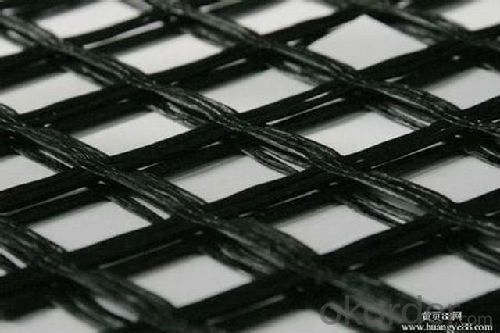
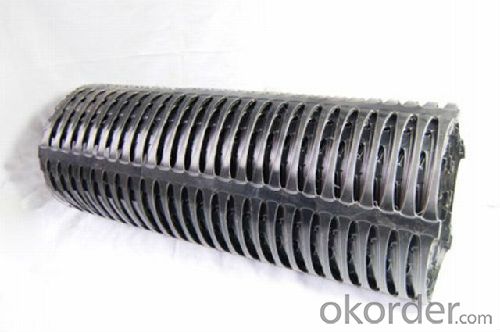
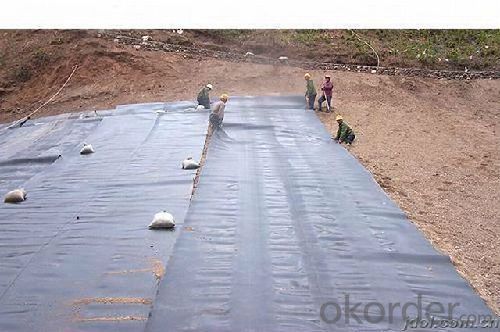
- Q: How do geogrids help in reducing construction labor requirements?
- Geogrids help in reducing construction labor requirements by providing stability and reinforcement to soil, allowing for the use of thinner layers of fill material. This reduces the need for extensive excavation and material placement, thus minimizing the amount of manual labor involved in the construction process.
- Q: How are geogrids connected to the surrounding soil?
- Geogrids are connected to the surrounding soil through a process called interlocking. The geogrids have open spaces or apertures that allow soil particles to fill in, creating a bond between the geogrid and the soil. This connection helps improve the stability and load-bearing capacity of the soil, making it more resistant to erosion and preventing the geogrid from slipping or moving out of position.
- Q: Can geogrids be used in temporary retaining structures?
- Yes, geogrids can be used in temporary retaining structures. Geogrids are commonly used in construction projects to reinforce soil and provide stability to retaining walls and structures. They are designed to withstand high tensile forces and can be easily installed and removed, making them suitable for temporary applications.
- Q: How do geogrids improve the performance of geosynthetic-reinforced foundations?
- Geogrids improve the performance of geosynthetic-reinforced foundations by providing enhanced soil stabilization and reinforcement. They distribute and transfer loads more efficiently, reducing settlement and improving overall stability. Geogrids also increase the bearing capacity of the foundation, allowing for the construction of structures on weak or unstable soils.
- Q: How do geogrids improve the performance of pavements?
- Geogrids improve the performance of pavements by providing reinforcement and stabilization. They help distribute the load more evenly, reducing stress and preventing cracks and rutting. Geogrids also enhance the pavement's tensile strength, increasing its overall durability and lifespan.
- Q: How do geogrids help in reducing the use of natural resources?
- Geogrids help in reducing the use of natural resources by providing reinforcement and stabilization to soil structures. They allow for the use of less soil and aggregate materials in construction projects, reducing the need for excavation and mining of natural resources. Additionally, geogrids improve the durability and longevity of structures, reducing the need for frequent repairs or replacements, further conserving natural resources.
- Q: Are geogrids resistant to biological clogging?
- Yes, geogrids are resistant to biological clogging. They are typically made from materials such as high-density polyethylene (HDPE) or polyester which are resistant to biological degradation. Additionally, geogrids have an open structure that allows for effective drainage and prevents the accumulation of organic matter that could lead to clogging.
- Q: Can geogrids be used in reinforcement of mechanically stabilized earth retaining walls on soft soils?
- Yes, geogrids can be used in the reinforcement of mechanically stabilized earth retaining walls on soft soils. Geogrids are commonly employed in such applications to enhance the stability and load-bearing capacity of the retaining wall system. By providing tensile strength and distributing lateral loads, geogrids help to prevent the wall from sliding or failing due to the weak soil conditions.
- Q: Do geogrids provide reinforcement to geosynthetic clay liners in waste containment facilities?
- Yes, geogrids are commonly used to provide reinforcement to geosynthetic clay liners in waste containment facilities. They enhance the stability and strength of the liners, preventing them from tearing or shifting under heavy loads, and improving overall containment system performance.
- Q: How do geogrids help in reducing the risk of slope instability?
- Geogrids help in reducing the risk of slope instability by reinforcing the soil and providing additional strength to the slope. They act as a stabilizing agent by increasing the soil's shear resistance and preventing it from sliding or collapsing. This reinforcement helps in distributing the forces exerted on the slope, reducing the potential for slope failure and improving overall stability.
1. Manufacturer Overview
| Location | Shandong, China |
| Year Established | 2002 |
| Annual Output Value | Above US$ 20 Million |
| Main Markets | 20.00% North America 15.00% South America 15.00% Eastern Europe 10.00% Southeast Asia 10.00% Northern Europe 10.00% South Asia 10.00% Western Europe 5.00% Africa 5.00% Mid East |
| Company Certifications | ISO9001:2000; |
2. Manufacturer Certificates
| a) Certification Name | |
| Range | |
| Reference | |
| Validity Period |
3. Manufacturer Capability
| a) Trade Capacity | |
| Nearest Port | Qingdao Port |
| Export Percentage | 41% - 50% |
| No.of Employees in Trade Department | 6-10 People |
| Language Spoken: | English; Chinese; |
| b) Factory Information | |
| Factory Size: | Above 80,000 square meters |
| No. of Production Lines | Above 10 |
| Contract Manufacturing | Design Service Offered; Buyer Label Offered |
| Product Price Range | High; Average |
Send your message to us
HPDE Geocells Fiberglass Geogrid with CE Certification
- Loading Port:
- Qingdao
- Payment Terms:
- TT or L/C
- Min Order Qty:
- 20000 m²
- Supply Capability:
- 10000000 m²/month
OKorder Service Pledge
OKorder Financial Service
Similar products
Hot products
Hot Searches
Related keywords
